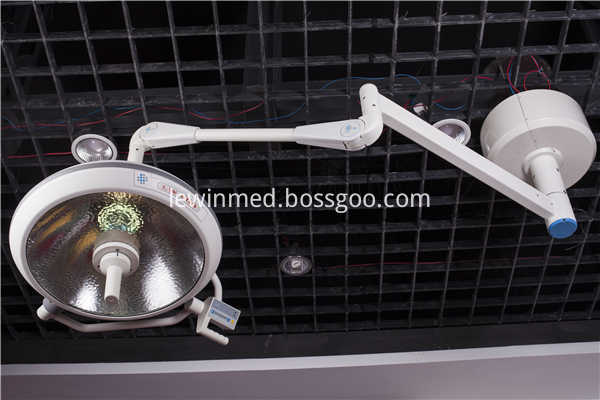Pay attention to "four guarantees" in the middle and late period of rape
In the middle and late stages of rapeseed, it is an important period for the formation of rapeseed production. We must pay attention to the timely management of field management centered on "defending foliage, root preservation, stem conservation, and production preservation."
Preserve the antifreeze before the spring and pay attention to pest prevention in the spring. According to statistics from the meteorological department, there is a relatively large freezing year every 4 years; the freezing temperature of rapeseed leaves is -39°C to -5°C. Therefore, after the occurrence of freezing weather, the leaves suffer first; under low temperature conditions, the leaf cell gap Freezing of water and intracellular freezer, cell tissue damage, the temperature rise, the leaves become water-like, then yellow, then white charred; appropriate watering before freezing, lack of paddy field appropriate irrigation, not only during freezing Abnormal water loss and physiological drought, and can release energy through water, to prevent the soil temperature and paste the ground temperature is too low; before the advent of freezing, with 0.5% urea, 0.3% potassium dihydrogen phosphate liquid spraying, improve The cell fluid concentration and physiological function also have a good antifreeze effect; after the weather turns fine, sweeping the snow in the field can promote the increase of soil temperature, prevent the leaves from transpiration and water loss after the temperature rises, and the root system has low water absorption capacity due to low soil temperature. Physiological drought occurred; frozen leaves removed after freezing can prevent frostbite from involving the entire plant; winter should pay attention to killing 2500 to 3000 times with 25% enemy to control aphids and cabbage caterpillars; And the rapeseed leaf blight is serious. The leaf miner flies into the leaf with the larvae “leaf mites†and feeds on the leaves. An off-white tunnel is bent over the leaf surface, causing the leaves to wilt or the yellow leaves to fall off; for the aphids and rapeseeds. The leaf miner flies in the initial stage of development with 2.5% enemies to kill 2500-3000 times spray; the latter stage can be used to prevent and control 10% alfalfa 2500-3000 times; at the same time pay attention to the use of metalaxyl, chlorothalonil control Rape downy mildew.
In the middle and late period of Baogan canola, it is necessary to prevent roots from premature aging, and the premature decline of roots is unfavorable for the growth of shoots. After spring, with the increase of rainfall, the soil can easily become waterlogged and anoxic, causing premature failure of roots. Therefore, on the basis of ditching before winter, the “three ditch†should be dredged in time after spring; unopened ditch should be filled. Shallow to deepen; in short, to do rain and ditch dry, to prevent waterlogging; after the spring for the long seedlings, with 100PPm paclobutazole solution (mu with 15% paclobutrazol 33 grams of water 50 kg) or 40% CCC Double crossing spray can not only control the growth of the above ground, but also promote root activity. Spraying 0.2% boron fertilizer during bolting period can promote the transfer of some photosynthetic products to the roots, which is beneficial to root preservation.
After the stalks are stably applied to the moss on the basis of spring, the sclerotia should be re-inhibited after bolting. Sclerotinia disease not only damages the flowers and leaves, but also harms the stems, especially the damage to the stems. The round or fusiform lesions with brown water stains at the beginning of the stems gradually expand to form gray rot, more than diseased parts. Slightly wilting; Sclerotinia sclerotiorum usually begins in late February and enters the peak of onset from late March to early April. Based on the application of potash fertilizer, cultivating the larvae at the initial stage of bolting, destroying the sub-capsule plate can reduce the initial infection. Source; yellow leaves and diseased leaves removed at the beginning of flowering; yellow, old and diseased leaves in the middle and lower part of the flowering stage were removed and taken out of the field; full flowering period and the result period were on the middle and lower stems and leaves, 70% thiol was selected. Bujin 500 to 800 times each spray.
There are more flowering rapeseeds, but the flowering plants fall off seriously, usually more than 30%, and it is about 60%. The flowering process is affected by the nutritional conditions, especially the lack of boron can lead to flowering, causing Shedding; while stabilizing stucco fertilizer, draining the gutter, and bee-assisted pollination, apply boron fertilizer to rape before spring, 0.3-0.5 kg per mu; pay attention to bird fowls during the ripening of pods , And timely harvest, heap drying and threshing.
Single Dome Halogen Operating Lamp with excellent color temperature control.By using color temperature compensation technology, the color reversion is uprised, and it is more suitable for the illumination of the complex surgery such as encephalon surgery and thorax surgery.Single Dome Halogen Operating Lamp are convenient to use. Reflector system designed in CAD; color temperature close to that of sunlight; making the tissue surface visible under natural color; depth of tubular light beams up to over 1200mm; uniform illumination effectively eliminating shadows under any circumstance.

Single Dome Halogen Operating Lamp
Single Dome Halogen Operating Lamp,Single Dome Ceiling Operating Light,Single Dome Ceiling Ot Light,Single Dome Surgical Room Lamp
Shandong Lewin Medical Equipment Co., Ltd. , https://www.lewinmed.com